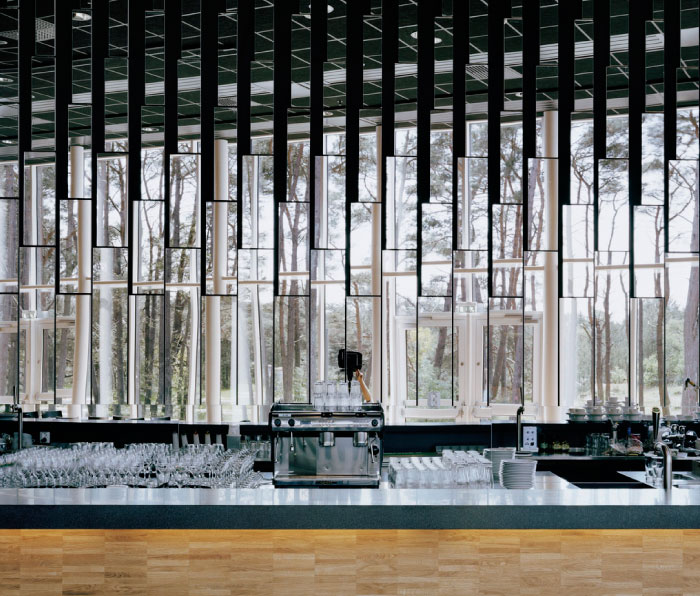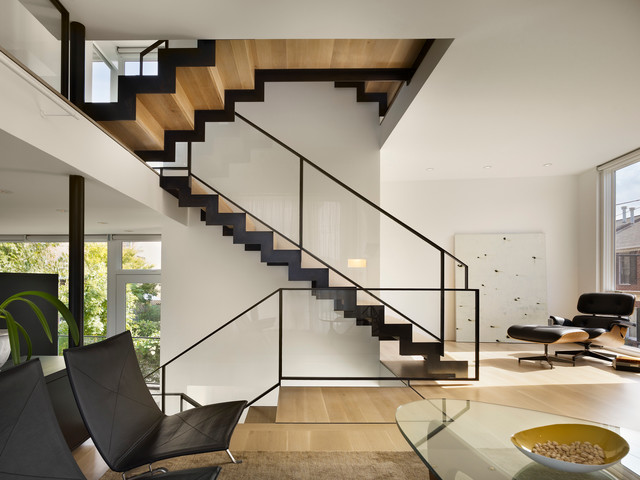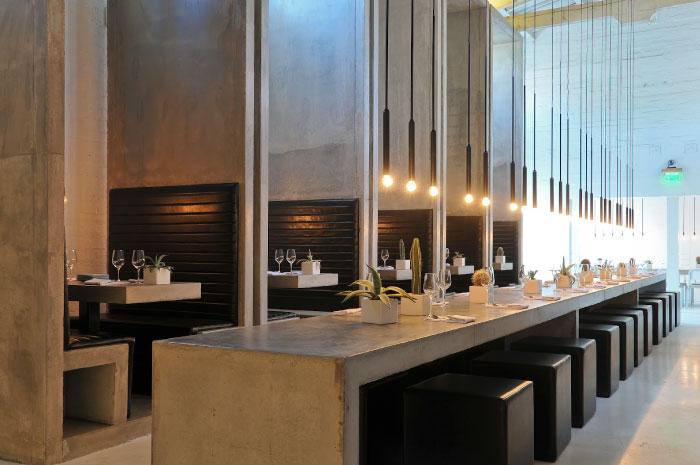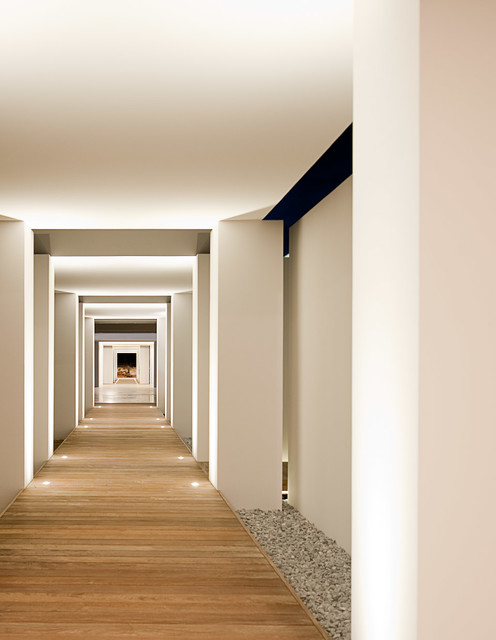Unlike repetition and pattern above rhythm has slightly more complexity to it. Where repetition and pattern require the same design element to be repeated throughout the design in the same way rhythm requires the repetition of a.

Principles Of Interior Design Part 2 Rhythm
In interior design rhythm is all about repetition of design elements that help to create movement within a space.

. Rhythm is a key design principle that encourages our eyes to move around a room in an organized way. Repetition gradation transition contrast and radiation. Rhythm is usually achieved through repetition of lines shapes colors and more.
When used well it brings an underlying unity and sense of variety to our spaces. Rhythm is one of the basic principles in interior design and commonly used to help the eyes move around the room in an organized manner. Rhythm is defined as a strong regular repeated pattern of movement or sound.
The National Center for Interior Design Qualification defines the profession and field as follows. Also it plays a large role in how we perceive the space both in terms of functionality and whether or not it seems aesthetically pleasing. Interior design is the art and science of enhancing the interior of a building to achieve a healthier and more aesthetically pleasing environment for the people using the space.
When this principle is applied to music think of the repeated beat in a song that created a musical pattern. In interior design rhythm is all about visual pattern repetition and rhythm is defined as continuity recurrence or organized movement. Rhythm sets up those patterns leading the eye to the next point and the next and the next.
Like rhythm in music rhythm in design brings a sense of movement to a space. Rhythm is a principle of design that suggests movement or action. There are five flavors of rhythm.
Other items around the focal point are used to complement it. As is the case in music rhythm is all about creating flowing patterns with repetitions transitions and progressions that end up creating an amazing aesthetic indoors. What is balance in design.
Repetition and alternation Progression or gradation Transition. A space that has steady rhythm and repetition will lead the eye around the room seamlessly. Photo courtesy of Palumbodesigns 9050_Oriole_Way_Interiorpng.
A central piece of art or furniture plays the role of a focal point or attention grabber. Rhythm may be applied in bold statements that make an obvious suggestion about a path of travel or more subtly applied to move your eye about a space without you even realizing the rhythm is there. In interior design rhythm is all about repetition of design elements that help to create movement within a space.
Its created when one or more elements of design are used repeatedly to create a feeling of organized movement. Rhythm - A visual tempo or beat. Suggests connected movement between different elements of interior design.
Rhythm can be created using the same colours same materials same shapes or even by a progression of smaller to bigger furnishings as you move around the room. It is the way that order interest and focus are introduced to a space and helps to lead your eye throughout the room. In this article Lauren explains how scale and proportion create synergy and shares tips on how you can get started.
Our eyes actually bounce around the room at lightning speed going from one thing to another. Designers insert spacing between elements to make rhythm. Rhythm is the idea of creating organized movement around the room by repeating elements in a space.
Today she will cover the final principal of interior design. The principle of design that refers to a regular repetition of elements of art to produce the look and feel of movement. So heres a good working definition of rhythm in interior design.
You can use several photos in the same type of frame along a wall to create rhythm. Youve heard designers talk about moving the eye through the space Thats what rhythm does. The rhythm in most interior designs is based on one of five principles.
In addition to this rhythm plays an important role in interior design as it helps in how the viewer perceives the space in terms of functionality and appearance. Rhythm in interior design denotes creating visual interest throughout your space by repeating and contrasting visual patterns. Its used to help our eyes move around a room in an organized manner and thought.
It creates a visual tempo in artworks and provides a path for the viewers eye to follow. To start rhythm is one of the seven principles of interior design. You may have heard from Havenly designer Lauren Cox about the power of interior design how to use color and how to configure a balanced roomAnother frequently overlooked but incredibly important design principal is scale and proportion.
Rhythm When you repeat elements the intervals between those repetitions can create a sense of rhythm in the viewer and a sense of movement. INTERIOR DESIGN DEFINITIONS. By repeating patterns shapes colour and texture or similar and complimentary pieces throughout a space you create a.
Repetition is the use of the same object several times. You can create rhythm using gradation repetition transition or radiation. There are 5 different methods of showing rhythm.
Human beings by our very nature look for patterns. Kjellgren kaminsky architecture created rhythm in this dance hall by repeating a pattern of mirrors. Rhythm Rhythm is the path your eye follows.
Elements can be repeated alternated or arranged in progression to maintain a visual tempo. Alternating Flowing Progressive Random and Regular. Rhythm and repetition is the idea of creating movement and harmony throughout your space with recurring patterns colors and different elements.
It carries the eye along a path at a pace that is comfortable for the viewer. Rhythm may be applied in bold statements that make an obvious suggestion about a path of travel or more subtly applied to move your eye about a space without you even realizing the rhythm is there. Musicians create rhythm in the spacing between notes effectively making these silent gaps play off the notes.
Its all about that eyebrain connection. Rhythm is how well you execute repetition. When applied to an interior design rhythm is achieved by the repetitive use of decorative elements.
Rhythm achieved through linear elements alternating elements gradation repetition or intricate details. Interior design is a multi -faceted profession in which creative and technical solutions are applied within a structure to achieve a built interior environment.

5 Ways Rhythm Engages Your Eye

Principles Of Interior Design Part 2 Rhythm

What Is Rhythm In Interior Design Learn To Apply Tilen Space

What Is Rhythm In Interior Design Learn To Apply Tilen Space

Basic Interior Design Principles Everyone Should Know Brumbaugh S

Principles Of Interior Design Part 2 Rhythm

5 Ways Rhythm Engages Your Eye

What Is Rhythm In Interior Design Learn To Apply Tilen Space
0 komentar
Posting Komentar